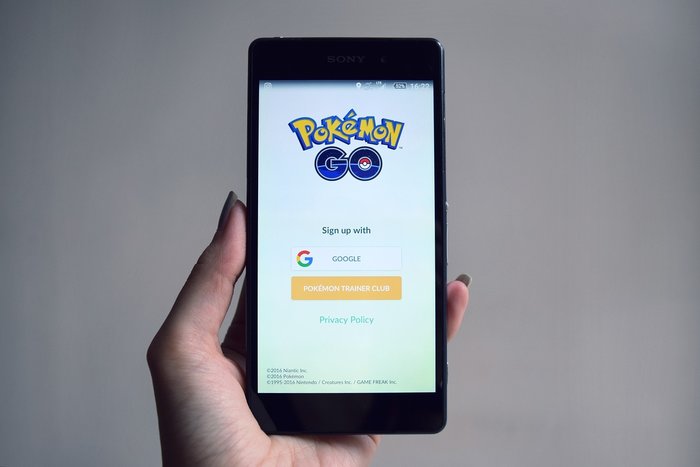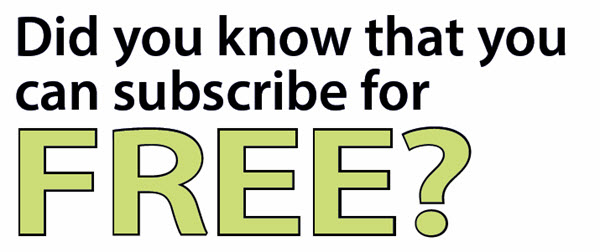First in a series about email marketing for small business and how to build an email list.
Read Part II: Email Signup Contest Ideas
Read Part III: Customer Emails at Checkout
How to Build an Email List
Starting an email marketing program for a gift business is either the best move you can make or a waste of time and money, depending upon who you ask. As usual, the truth is somewhere in between.
While agencies, email services and anybody else with a horse in the race will say you must gather and use your customers’ email addresses, neither acquiring emails nor creating marketing from them has been simple enough for most store owners to manage.
So Smart Retailer conducted a study wondering if retailers were successfully running email programs, and results were predictably polarized.
- 56 percent of gift retailers surveyed have started email marketing and are having at least fair success, with 22 percent of that group calling their results “excellent.”
- A significant 10 percent who tried have given up.
- About one-third have never acquired emails.
- Another 15 percent have emails but don’t know what to do with them and thus haven’t used them yet.
So half of retailers are having at least decent success while half aren’t sending emails at all. Smart Retailer is hoping to work with retailers to bridge that gap.
In the first installment of this series, we’re going to ask “Is email acquisition and marketing a worthwhile effort?”
In future installments we’ll discuss the steps involved in creating an email marketing program. First let’s establish whether or not it’s worth the time and money.
Success Ratio: Results for retailers who tried email marketing
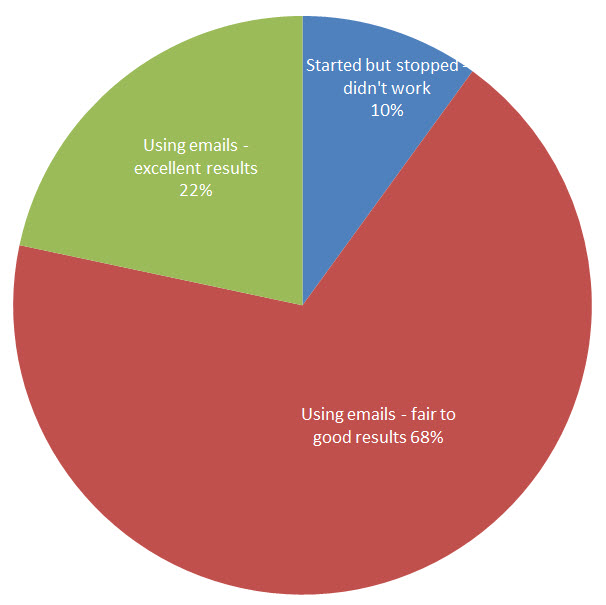
Results among retailers who have email addresses and started using them.
We asked our readers if they have tried email marketing, and if so, was it worth the effort? Of the gift businesses who started using their email addresses (see the pie chart above), 68 percent said their results are Fair or Good, 22 percent said Excellent, and 10 percent started and stopped because it didn’t work.
In summary: One in three retailers haven’t yet started acquiring emails and another 15 percent have emails and didn’t start using them yet, but among those who have, almost 90 percent of gift retailers have had good enough email marketing results to continue.
How to Build an Email List: Harder Than It Seems
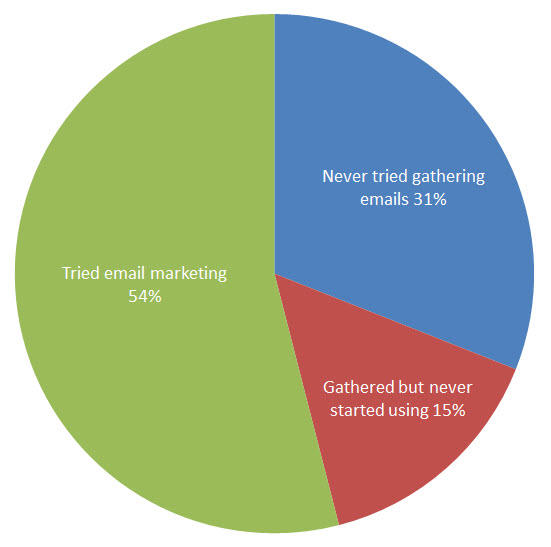
Slightly more than half of retailers have tried email marketing. In other words, almost half haven’t tried yet, and one-third of that group have email addresses but aren’t sure what to do with them.
Our feedback from retailers demonstrated that those who have not succeeded at email marketing admit they simply don’t know how. There are two challenges: Getting the email address from a customer, and then running an email-marketing program with them.
“We don’t know the best way to gather (emails), or how to utilize them without being ‘pesky,’ ” replied one retailer who preferred to remain anonymous. That summarizes the most-common reasons cited by retailers who haven’t started email marketing yet.
“The biggest challenge is getting customers to sign the email list,” said Kelli Phillips of Violette Wings & Giftey Things in Atascadero, Calif. (www.violettewings.com) “It seems they are reluctant to give out their (email) address.”
Another retailer who preferred to be unnamed said they need tips for cutting down email-creation time. “I would love to have a simpler, time-efficient and cost-efficient way of doing the emails,” the retailer stated. “It’s nice to see who and when they are opened but right now I’m paying more than it’s worth.”
Proof that Email Marketing Works
Retailers who have found a successful formula say email is absolutely critical to their business. The No. 1 reason cited: You can control your email efforts but you can’t control the efficacy of social media.
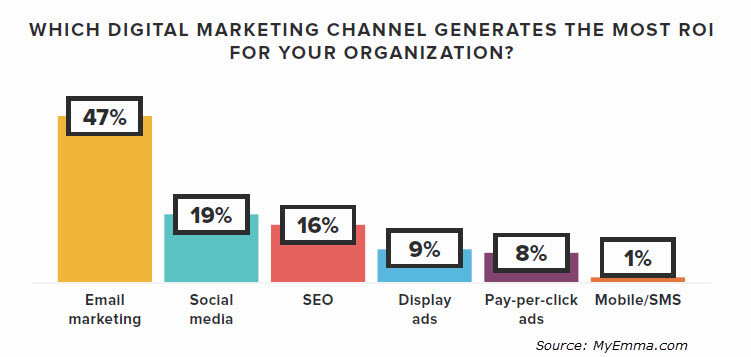
Caveat about this chart: MyEmma.com is an email-marketing service. But this chart has been replicated by dozens of other neutral observers.
“I always stress to other retailers I help out … your (email) list is gold,” said Ann Schneider, owner of the The Front Porch in Waukesha, Wis. (ilovethefrontporch.com) “You don’t own Facebook or other social media platforms but you own your email list and your website is yours.”
Joe Pulizzi, founder of Content Marketing Institute, states it this way: “Don’t build your house on rented land.”

WBR Digital and emarsys created a white paper about email marketing. It showed that email is still a small business’ best friend. Click here to get this white paper.
Veteran marketers have seen what Schneider and Pulizzi call out – social posts cannot compete against an email newsletter for ROI (see charts from MyEmma.com and WBR Digital / emarsys). Not-so-fun fact: More than three-quarters of a Facebook Page’s “followers” won’t see a Facebook post unless you pay Facebook to deliver it to them.
An email, however, will almost always reach the recipient, and while three-quarters of recipients typically only read the Subject Line and not the email itself, that Subject Line was seen and the email needs to be addressed by the recipient before it goes away.
Remember it this way: Social marketing is like fishing in a waterfall; email marketing is like fishing in a lake.
Speaking for Themselves: Retailer Advice on Email Marketing
Kate Gourde of Cooper’s Gifts, Apparel & Home in Agawam, Mass., (www.coopersgifts.com) did not have a marketing background when she started her email program but has grown her email list to more than 8,000 customers and said it’s now a focus of her marketing efforts.
![how to get email addresses for small businesses [infographic]](https://smart-retailer.com/wp-content/uploads/how-to-get-email-addresses-for-small-businesses-infographic-120x300.jpg)
Click twice to expand our email marketing infographic (after popup, expand again by clicking top-right). Escape to close.
“Going forward I want to work on our emails always offering something of added value to them; a scarf-tying video, a chart of birthstones by month, a video of beach hacks when we advertise our beach bags and other merchandise, a chart of traditional and modern anniversary gifts with wedding gift suggestions, etc.,” she said. “Always something to be a ‘takeaway.’ ”
Gourde’s digital marketing is going so well that she has listed an opening for an online marketing employee and is working on creating an online store to expand on the current website’s offering of gift certificates (sold via PayPal).
Not every store owner is so equipped from a budgetary or skillset standpoint. But retailers who’ve had success with emails are in the majority among those who’ve tried. Schneider sends weekly emails and achieves $500 or more from a typical e-blast. “We have extremely good results with our emails,” she said. “We always use them for events, promos, new inventory or classes. Never just a brand message, but always with a CTA (call to action).”
Snap Retail Snapshot
Owned and operated by Emily Graham, The Red Door Boutique is a small boutique located in historic downtown Taneytown, Md. Graham uses Snap Retail for her newsletter and website. “I do all the work on the newsletter,” said Graham, calling herself a “jack-of-all-trades owner.”
“The cost for my website and email/newsletter subscription through Snap Retail runs about $900 per year,” she said. “I have a mixed range of customers and many prefer email newsletters. For my store, the ROI has been great. I am able to get a lot of information in one fell swoop and even include coupons or special offers. I also use Facebook in the same manner.”
Typical Results
The most-typical scenario described by retailers in our survey looked much like that of Colleen Perry, Brissonte Gifts & Home Décor of North Reading, Mass. (www.brissonte.com) She uses Mailchimp and said her 1,000-email list produces $200-$500 per eblast. “If I include a coupon (in an email), perhaps two to six will come in to use it,” she added.
Bill Sutton, The Village Shoppes, Inc., in New Carlisle, Ind., (www.thevillageshoppes.com) uses Constant Contact and has an employee working more than 40 hours/month on digital initiatives. His sales exceed $500 per email sent (2-3 per month) so he said that time commitment is worthwhile.
First in a series about email marketing for small business and how to build an email list
What’s Next?
Read Part II: How to build an email list via sweepstakes and giveaways


![how to build an emaill list for small businesses [infographic]](https://smart-retailer.com/wp-content/uploads/how-to-get-email-addresses-for-small-businesses-infographic-410x1024.jpg)



